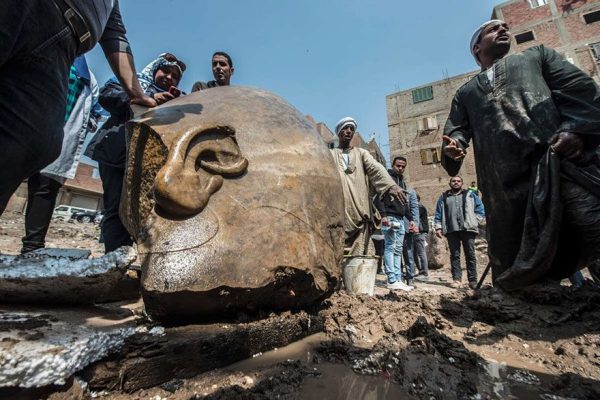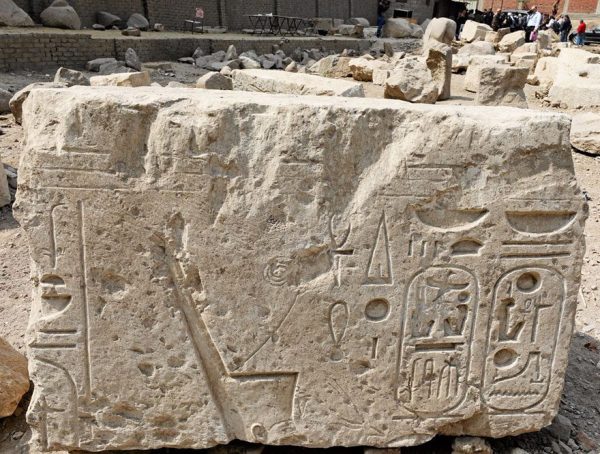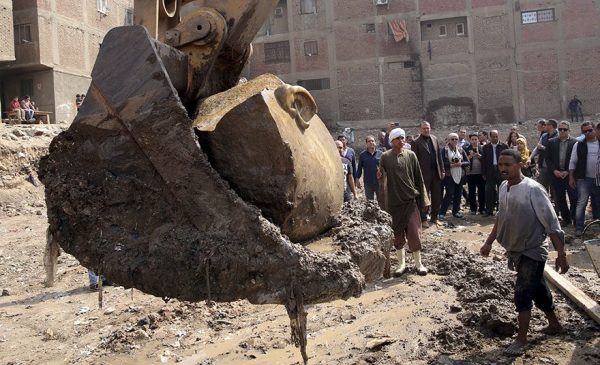A remarkable discovery unfolded in a Cairo slum as archaeologists from Egypt and Germany unearthed a colossal 26-foot (8-meter) statue submerged in groundwater.

The statue, found near the remnants of the temple of Ramses II in the old city of Heliopolis, is believed to depict the revered pharaoh Ramses II, who ruled Egypt over three thousand years ago.
Ramses II, known as the ‘Great Ancestor,’ was a powerful and celebrated ruler of ancient Egypt, leading military expeditions and expanding the Egyptian Empire from Syria in the east to Nubia in the south. He reigned from 1279 to 1213 BCE, making him the third pharaoh of the Nineteenth Dynasty of Egypt.

The statue, crafted from quartzite, was discovered by the joint Egyptian-German expedition, including the University of Leipzig. The findings also included the upper part of a life-sized limestone statue of Pharaoh Seti II, Ramses II’s grandson, measuring 80 centimeters.
The discovery is particularly significant as the sun temple in Heliopolis was founded by Ramses II, making it likely that the colossal statue represents him. The sun temple was one of Egypt’s largest temples, nearly double the size of Luxor’s Karnak, but was destroyed in Greco-Roman times.

The statues, submerged in groundwater, are currently undergoing restoration by the team of archaeologists. If proven to depict Ramses II, the colossal statue will be relocated to the entrance of the Grand Egyptian Museum, set to open in 2018.
The find in the working-class area of Matariya, amid unfinished buildings and mud roads, offers a glimpse into the ancient belief that Heliopolis was the place where the sun god lived.

Ramses II believed that the world was created in Heliopolis, known as Matariya today. The ongoing restoration aims to extract the remaining pieces of both statues, providing invaluable insights into ancient Egyptian history.
This discovery carries potential significance for Egypt’s tourism industry, which has faced challenges since the upheaval in 2011. The unveiling of such monumental artifacts may contribute to revitalizing tourism, an essential source of foreign currency for Egypt.

The country has been working to overcome setbacks, including a decline in tourist numbers and security concerns following a plane crash in 2015.





